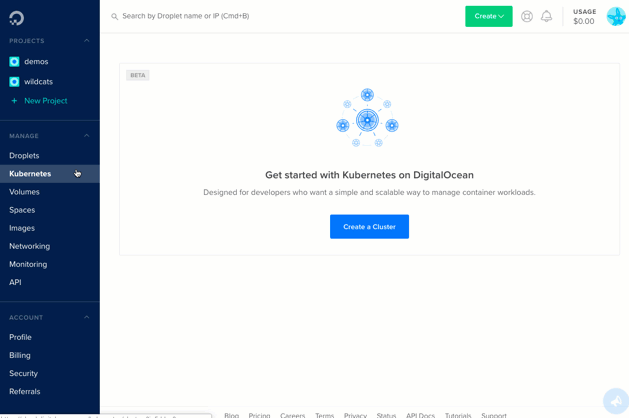DigitalOcean Delivers on Managed Kubernetes Promise
DigitalOcean is now making a managed instance of Kubernetes generally available as a cloud service for containerized applications running in a production environment.
Reynold Harbin, director of product marketing for DigitalOcean, says since the service was launched as part of an early access program last May there are now more than 30,000 developers using the service.
While there’s plenty of competition when it comes to providing access to a managed Kubernetes service, Harbin says DigitalOcean continues to attract developers and emerging startups to its cloud platform using a set of well-defined open application programming interfaces (APIs). Interest in Kubernetes among developers is high, but there is a significant learning curve when it comes to deploying and managing Kubernetes. DigitalOcean has created a user interface and workflow designed to make it easier for developers to spin Kubernetes clusters up and down, says Harbin, noting those clusters can be based on any version of Kubernetes a developer decides to employ on virtual machines managed by Digital Ocean. For now, he adds, DigitalOcean has no plans to support Kubernetes instances running on bare-metal servers.
DigitalOcean also makes it possible configure worker Kubernetes nodes based of any size, access to firewalls and load balancers and integration flexible block storage, says Harbin. Continuous integration/continuous delivery (CI/CD) workflows could also be implemented in a matter of seconds, he notes.
As the shift toward containerized applications running on Kubernetes becomes more pronounced, IT organizations of all sizes will be making decisions regarding how much or whether they want to continue to manage IT operations. Managed Kubernetes services make it possible for IT organizations to devote more resources to building and deploying applications versus managing the underlying IT infrastructure on which those applications depend. The challenge many IT organizations will face, if they decide to rely more on managed services, is creating DevOps processes encompassing both their internal developer teams and the managed service provider (MSP). Defining those processes might become even more challenging should the organization embrace multiple clouds that are accessed via managed services provided by two or more cloud service providers. At the same time, it’s not uncommon for different development teams within the same organization to embrace disparate managed services using their own DevOps methodologies.
Of course, the percentage of applications running in a production environment remains slight compared to the overall IT environment. But as IT organizations continue to embrace microservices-based architectures relying on containers and Kubernetes, it’s apparent more of them will need to embrace DevOps processes more aggressively.
In the meantime, managed Kubernetes services from providers such as DigitalOcean make it possible for developers to advance adoption of containers and Kubernetes clusters without having to wait for approval from an internal IT department. In fact, while many developers would like to see their organization more widely adopt container technologies such as Kubernetes, it doesn’t necessarily follow that they are all as equally excited about having to perhaps re-engage with internal IT operations teams.





